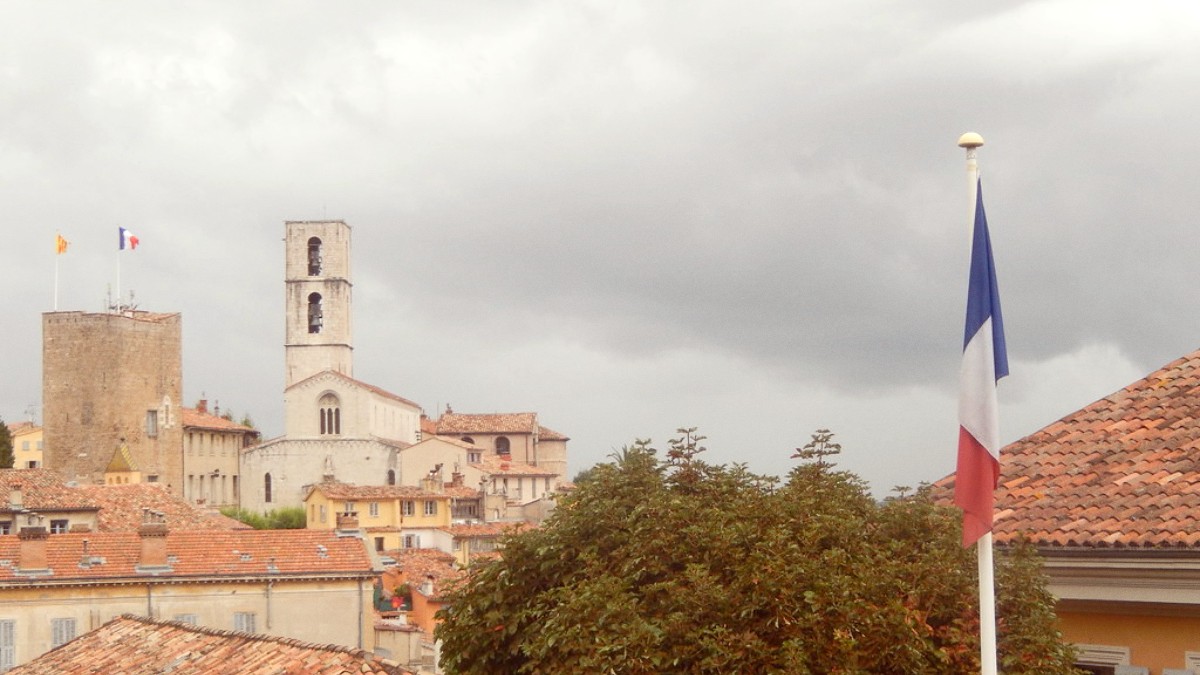
Cote Dazur, France
Temperature: Spring (April-May) sees 10°C to 20°C. Summer (June-August) holds 20°C to 30°C, with occasional higher periods. Autumn (September-October) brings 12°C to 22°C. Winter (November-March) generally stays between 5°C and 15°C. Precipitation: Summers are dry. Autumn and spring moderate rainfall, October often highest. Winters are mild with occasional rain. Humidity: Humidity levels remain moderate, slightly higher in summer.
Summer can bring intense heat. Stay hydrated and seek shade during the hottest parts of the day. The Mistral Wind, a strong, cold, dry wind, blows occasionally in winter and spring, making cooler days feel colder. Due to dry conditions, the risk of forest fires becomes high in summer. Heed local warnings.
For example, if forest fire risk is high, avoid activities that could cause fires. Monitoring local forecasts assists planning during these periods.
June-August
Weather consistently warm and sunny. All attractions operate on full schedules. Jasmine and tuberose flower fields begin to bloom in July.
Expect larger crowds. Accommodation and flight prices reach their peak. Temperatures can be very hot.
April-May, Sep-Oct
Temperatures are pleasant. Fewer crowds than high season. Prices for lodging and airfare are often lower. May sees the harvest of Centifolia roses.
Some smaller attractions may have reduced hours later in autumn. Occasional rainfall is possible.
November-March
Fewest tourists. Lower prices for accommodation. Quieter atmosphere. Mimosa blooming season from January to March.
Temperatures are cooler. Higher chance of rain. Some seasonal businesses may close. Daylight hours are shorter.
To see flower harvesting, May for Centifolia roses and Roses de Mai. July to October for jasmine and tuberose. January to March presents the mimosa bloom, especially in the nearby Tanneron mountains.
Outdoor pursuits like hiking and cycling benefit from optimal temperatures in spring (April-May) and autumn (September-October). Perfume workshops operate year-round, offering flexibility for your visit.
Centifolia roses, Roses de Mai harvest.
Jasmine and tuberose harvest.
Mimosa bloom in Tanneron mountains.
Optimal for hiking and cycling.
Perfume creation workshops.
France is part of the Schengen Area, which includes 27 European countries that abolished passport and other border controls at their mutual borders.
Schengen Visa (Short-stay, Type C): Citizens of countries not part of the Schengen visa-exempt list typically need a Schengen visa for stays up to 90 days within any 180-day period.
Long-stay Visa (Type D): For stays over 90 days, a long-stay visa is necessary. The application process is more involved, contingent on the purpose of your extended stay (e.g., study, work).
Citizens of many countries, including the United States, Canada, Australia, New Zealand, the United Kingdom, Japan, and several South American nations, do not need a Schengen visa for tourist stays up to 90 days.
France has no specific general entry fees for visitors. Upon arrival at a French airport, seaport, or land border, present your passport and any required visa or authorization to border control officers. They may ask about your travel purpose, stay duration, and proof of funds or accommodation. Cooperate fully and provide accurate information.
Prices on the French Riviera, Grasse included, can be higher than in other parts of France, especially during peak season.
The official currency of France and the entire Eurozone is the Euro (€). Exchange major currencies at banks or exchange bureaus. ATMs (Distributeurs Automatiques de Billets - DAB) usually offer better exchange rates. ATMs are widely available in Grasse's town center.
Credit and debit cards (Visa and Mastercard) are common for payments. Notify your bank of travel plans to prevent card blocking.
| Category | Budget Traveler (€50-€90) | Mid-range Traveler (€100-€200) |
|---|---|---|
| Accommodation | Hostel dorm or budget hotel/guesthouse (€30-€50) | Mid-range hotel, B&B, or apartment rental (€60-€100) |
| Meals | Supermarket groceries, bakeries, street food, budget cafes (€15-€25) | Combination of casual restaurants, local eateries (€40-€60) |
| Transportation | Public buses, walking (€5-€10) | Public transport, occasional taxi (€10-€20) |
Grasse is generally a safe destination.
Consult a travel health professional 4-6 weeks before your trip. Routine vaccinations (measles, mumps, rubella, diphtheria, tetanus, polio) current. Hepatitis A and B vaccines might also be suggested.
Apply high SPF sunscreen, wear a wide-brimmed hat, seek shade during mid-day, stay hydrated.
Drink plenty of water, especially when walking or during warm weather. Tap water in Grasse is safe to drink.
Emergency Number: 112 (European emergency number).
France operates a high-quality public healthcare system. Pharmacies, identified by a green cross sign, offer advice for minor ailments and dispense medications. The Centre Hospitalier de Grasse provides emergency services.
EU Citizens: Bring your European Health Insurance Card (EHIC). Non-EU Citizens: Comprehensive travel insurance covers medical expenses, emergency evacuation, and trip interruption.
Food hygiene standards in French restaurants and markets are high. Enjoy local cuisine with confidence.
Grasse is generally a safe town for visitors. The main concern for tourists is petty crime, like pickpocketing.
Petty crime occurs most often in crowded tourist areas, on public transport, or around major attractions. Grasse's Old Town, while picturesque, has narrow, winding streets; some areas might be less lit at night.
Maintain awareness of your surroundings. Secure your belongings by using a Money belt or an RFID-blocking travel wallet. Avoid openly displaying large amounts of cash or expensive items.
Be aware of potential seasonal hazards.
Keep a list of important emergency contacts readily accessible. Include your travel insurance provider's 24/7 assistance number, family contacts, and your embassy's details. Store this information both digitally and as a printed copy.
Dial 112 (European emergency number).
Dial 17 for police services.
Dial 15 for an ambulance.